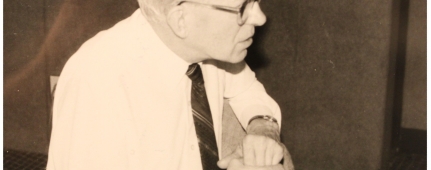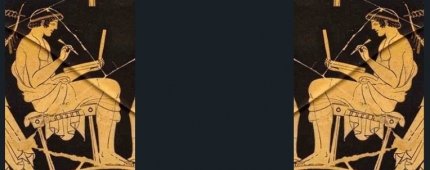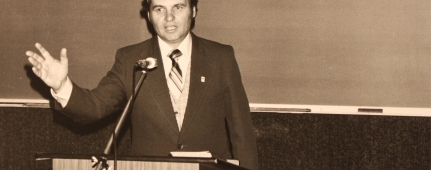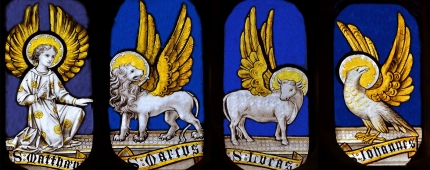Part 2: Robert Gundry, Gaining Renewed Support from ETS, Declares Peter An Apostate in Matthew’s Gospel
by F. David Farnell, Ph.D.
Copyright © 2014 F. David Farnell. All rights reserved.
Note: Part 1 can be found here. Here is the lecture mentioned in Part 1 & 2:
https://www.youtube.com/watch?v=QloN9EuOGXE
Introduction
This article is part 2 in response to evangelical critical scholar Robert H. Gundry’s newly released book entitled, Peter False Disciple and Apostate according to Saint Matthew. The first article that I wrote against his hypothesis was placed on DefendingInerrancy.com published on October 14, 2014 based on a transcript of his lecture at Westmont College on October 6, 2014 that celebrated Gundry’s 50th year of teaching.[1] Gundry’s presentation is now in book form by the same title, Peter False Disciple Apostate according to Saint Matthew (Eerdmans, 2015–wherein the book presents his thesis in 119 pages with 108 pages representing Gundry’s discussion with the remaining section being indexes). In his lecture and his now published book, Gundry utilized historical-critical ideologies to formulate his central thesis that the author of the Gospel of Matthew presented Peter as a false disciple and apostate from the faith in contrast to elsewhere in the New Testament where Peter is presented in a favorable light (e.g., Acts 1-13; 1-2 Pet). This contention of Gundry is not really a new position for him, for in his Matthew, A Commentary on His Handbook for a Mixed Church Under Persecution, and 1982 (First Edition) commentary, Matthew, A Commentary on His Literary and Theological Art, maintained a similar position to this lecture.[2] In essence, his position goes back to his days at ETS when he signed the inerrancy statement for membership.
Gundry’s accomplished this startling, as well as novel, declaration based on his understanding of the function of bibliology. Bibliology, in its origin and history, seeks to understand writers of the New Testament as presenting their own unique, distinctive contributions to theology, positing that each individual writer was not necessarily in agreement with other written portions of the New Testament, i.e., manifest contradictions and disagreements, existed in the unique theological content of the books of the New Testament. Indeed, Gundry uses bibliology in its true historical-critical sense, since the discipline arose to prominence as a reaction and rejection of dogmatic or systematic theology. Gerhard Hasel, in his excellent work, New Testament Theology: Basic Issues in the Current Debate, presents a sober assessment of the historical roots of biblical theology, now practiced by many evangelicals, especially Gundry. One must stress that biblical theology was developed through the influence of Neologian and rationalist Johann Philipp Gabler (1753-1826). Gabler, as noted by Hasel,
[M]arks the beginning of Biblical theology’s role as a purely historical discipline, completely independent from dogmatics . . . . (1) Inspiration is to be left out of consideration . . . . (2) Biblical theology has the task of gathering carefully the concepts and ideas of the individual writers, because the Bible does not contain the ideas of a single man . . . . (3) Biblical theology as a historical discipline is by definition obliged to distinguish between the several periods of the old and new religion.[3]
Harvey K. McArthur has demonstrated that as orthodox views of inspiration were rejected by the growing discipline of historical criticism, bibliology arose to predominance. The church throughout its early history, until the seventeenth century, believed that the Bible could be harmonized. Even the heretic Tatian, in his Diatessaron, believed so. The traditional view of harmonization centering in a high view of inspiration continued through the Reformation and beyond. MacArthur comments, “A striking phenomenon of the study of the Bible in the sixteenth century was the sudden flowering of Gospel harmonies.”[4] Those producing these works had two reasons for composing their harmonies: (1) to edify the faithful by the presentation of a total picture of Jesus life and ministry and/or (2) to refute the critics of the Gospels “by demonstrating the essential and astonishing agreement of the Gospels.”[5] David Laird Dungan adds to this characteristic of bibliology its rejection of harmonization, remarking the following about the falling away from traditional harmonization as historical critical ideologies predominated, “These sixteenth- and seventeenth century harmonies share one significant characteristic: they are without exception strikingly literal in their understanding of the Gospel narratives” and “These traditional Gospel harmonies proceeded on the basis of Augustine’s assumption that all four Gospels were uniformly true and without admixture of the slightest degree of error. The traditional way of stating this assumption was to claim that each had been written with the aid of the Holy Spirit, or the Spirit of Christ, so that all four were evenly true in all parts and passages.”[6] Hence, bibliology, by its very nature and historical antecedents, rejects harmonization. In contrast, dogmatic or systematic theology is the much older discipline, going back to the nascent beginnings of the church that believed harmonization of the texts, due to the assumption of the inspiration of the Holy Spirit upon the New Testament writers, could be placed into a unified expression without any real contradictions between the varied writers. In utilizing the traditional nature of bibliology, Gundry presents, in reality, a low- or no-view of inspiration and inerrancy in spite of assurances that he would sign the inerrancy statement of the Evangelical Theological Society.[7]
In light of this, Gundry accomplishes the goal of his thesis by (1) rejecting traditional harmonization as noted above, arguing “[t]he old method of harmonizing what we can and holding the rest in suspension has seen its day, like worn-out scientific theories that no longer explain newly discovered phenomena well enough”;[8] and (2) arbitrary, selective use of evidence. This latter charge can be demonstrated in an examination of Matthew 26. In Matthew 26 the focus is upon the last supper of the twelve with Jesus (26:17-36). In the context, Matthew relates that Jesus identified Judas as the betrayer (36:21, 25). In 26:21, Jesus then says to the remaining disciples “You will all fall way because of this night” with the emphasis in the sentence on the “you all.” Thus, all eleven are involved in falling away, not just Peter. Matthew uses the term “fall away” several times in his gospel regarding defection in discipleship with Him (13:21; 24:10). Evidently, Peter was not the exception for Matthew includes them all in “falling away” and reports that Jesus bases their action in fulfillment of Zechariah 13:7 about striking down the shepherd and scattering the flock. Matthew presents this as fulfillment of prophecy, not something unnatural to Peter or the other disciples, i.e. it was predicted to happen. Peter is not the sole disciple who falls away, but all of them, do so as evidenced in Matthew 26:56, with the statement by Matthew “[t]hen all the disciples left Him and fled.” While Peter remained a little while longer, he nonetheless, joined the others in defection quickly, i.e. they all “fell away.” Herein all denied Him before men (Matt 10:33) since none stood with Him but fled from the scene. Indeed, Peter’s defection might be viewed as less problematic than the rest since Matthew portrays Peter as vainly attempting to remain with Jesus longer than the others who went into hiding.
Sandwiched directly in between this pronouncement of falling away of all the disciples (26:31) and Jesus’s focus on Peter in 36:33-35a is Jesus’s command to meet them in Galilee in 36:32: “But after I have been raised I will go before you to Galilee.” Whatever “falling away Jesus had in mind, as well as in Matthew’s presentation of these events, Jesus [and Matthew] clearly does not view this defection of “all” as permanent, for he promises to meet these defectors in Galilee after His resurrection. Indeed, later he commands the women at the tomb to tell “His disciples” (Matt 28:7) after His resurrection to meet Him in Galilee and “take word to My brethren [Matt 28:10] to leave for Galilee, and there they shall see me.” One finds it odd, that Matthew would have utilized the designation “His disciples” in the angelic command to go to Galilee (Matt 28:7) as well as Jesus’s direct attribution of them as “My brethren” (Matt 26:31) in reference to the disciples who “all” “fell away” as predicted in Matthew 26:31. Adding further weight against Gundry is that Matthew 28:16 says, “the eleven disciples preceded to Galilee, to the mountain which Jesus had designated.” Since Judas is the betrayer and removed by Matthew from the narrative, the number eleven, by simple mathematics, naturally would include Peter, in spite of Gundry’s attempts to dismiss this verse since it constitutes an obvious problem for his hypothesis.
Furthermore, in Matthew 26:35b, immediately after Peter’s boast, “Even if I have to die with You, I will not deny you,” Matthew includes all of the disciples as boasting the same thing: “All the disciples said the same thing too.” If Gundry’s idea of defection upon Peter’s part has substance in Matthew, then “all” the disciples are guilty from Matthew’s recording of this universal boast by the disciples, i.e. all of the disciples would be “false disciples and apostates” not merely Peter. The point, of course, here is that only by selective “cherry-picking” of the evidence can Gundry sustain his hypothesis, for a close examination of the evidence in the bibliology of Matthew dissipates Gundry’s contentions quite forcefully.
Gundry’s Synoptic Theory Directly Contradicts His Thesis Regarding Peter as an Apostate and False Disciple
Standing in direct contradiction to Gundry’s contentions in bibliology regarding Peter as an “apostate” and “false disciple” is his synoptic approach. Throughout Gundry’s commentary on Matthew, he fervently maintains Markan priority or the 2/4 source hypothesis. He contends for his first edition commentary that “[t]he comparisons undertaken here will show that the peculiarities of Matthew derive almost wholly from his own revisions of and additions to Mark and the materials shared only with Luke (i.e., the materials usually designated as Q)” and “Matthew uses Mark and the materials shared only with Luke.”[9] In the 1994 revision, he continued to maintain the 2/4 source hypothesis: [my assumptions] “have included Matthew’ use of Mark and Q and a Q larger than ordinarily conceived.”[10] And, “I started doctoral work on the quotations in Matthew with the purpose of helping prove the priority of Matthew over Mark and the nonexistence of Q. Studying the data in detail convinced me to the contrary that Markan priority, and the existence of Q, and Matthew’s use of Mark and Q offer a much better explanation. Renewed study for the writing of the present commentary strengthened this conviction.”[11] Indeed, Gundry seems to view Matthew as, at times, slavishly following Mark, with, for example, even small changes in conjunctions, tense form and other minute points of rewording from Mark throughout his treatment of Matthew, i.e. “Matthew changes” the phraseology and working of Mark’s Gospel, etc.[12] Indeed, one would not exaggerate to content that Gundry’s commentary creates the firm impression that Matthew had Mark before him and painstakingly observed and minutely changed even the micro-wording of Mark as his guide in formulating his own gospel. The point here being that Matthew is viewed by Gundry as a product of Mark, even slavishly so.
The strong irony is that his synoptic approach manifests a blatant contradiction to his contentions in his lecture and book on the “apostasy” and “false discipleship” of Peter. This be observed especially in the testimony of the early church regarding both Matthew and Mark.[13]
The Testimony of the Church to the Priority of Matthew’s Gospel
The Gospel of Matthew was the church’s most popular Gospel in the decades up to the time of Irenaeus (ca. A.D. 180). After an extensive analysis of Matthew’s influence on early Christianity, Massaux relates,
Of all the New Testament Writings, the Gospel of Mt. was the one whose literary influence was the most widespread and the most profound in Christian literature that extended into the last decades of the second century….
Until the end of the second century, the first gospel remained the gospel par excellence….
The Gospel was, therefore, the normative fact of Christian life. It created the background for ordinary Christianity.[14]
Moreover, the unanimous and unquestioned consensus of the church Fathers was that Matthew was the first gospel written, and almost without exception, the early church placed the Gospel of Matthew first in the canon of the New Testament. Petrie observes, “Until the latter half of the eighteenth century, the apostolic authorship of ‘the Gospel according to Matthew’ seems to have been generally accepted.”[15] The present writer is not out to prove Matthean priority but merely to demonstrate that the consistent testimony of the early church was Matthew was written first. At no time was Mark ever said to be the first gospel written.
However, the Enlightenment and its spawning of historical-critical methodologies—particularly that aspect of the system called “Source Criticism”—marked the beginning of the end of that viewpoint.[16] Most New Testament scholars at the turn of the twenty-first century resoundingly reject the unanimous testimony of the early church regarding Matthean priority in favor of the Two- or Four-Source Theory[17] of how the Synoptic Gospels came into existence.[18] That rejection characterizes not only those of a liberal-theological perspective. It extends also to include many who probably would classify themselves as conservative, yet historical-critical evangelicals.[19] Few historical-critical evangelicals today dare to challenge the “findings” of Source Criticism.
Furthermore, concepts of literary dependency as maintained by Gundry were non-existent in the nascent early church. A work, Mark, vol. II from the Ancient Christian Commentary on Scripture buttresses these contentions. This work, by appealing to the ancients, circumnavigates such sacrosanct, as well as highly erroneous, historical-critically cherished icons originating out of source, form, tradition and redaction criticism, revealing some interesting contradictions with post-Enlightenment assertions. For instance, the volume on Mark reveals that the early church fathers overwhelmingly neglected Mark, rarely produced a sustained commentary on Mark. Instead, Matthew and John received most attention. While one could argue that they held Matthew and John in high esteem because they were apostolic, one still wonders why, if Mark was really the first written gospel as so ardently maintained by source criticism (contra the Two-Document Hypothesis), did the fathers so persistently neglect it. Moreover, the volume also reveals that the fathers consistently maintained that Mark actually wrote Mark (not some unknown “evangelist” as maintained by historical criticism) and that it reflected Peter’s preaching rather than being a condensation of Matthew and Luke (contra the Two-Gospel Hypothesis). The conclusion the work reaches is astoundingly refreshing: “It had always been evident that Mark presented a shorter a shorter version of the gospel than Matthew, but the premise of literary dependency was not generally recognized. The view that Matthew and Luke directly relied on Mark did not develop in full form until the nineteenth century,”[20] Such a perspective also indicates that the fathers regarded Matthew, not Mark, as the first gospel to be written. From this reviewer’s perspective, only by a priori reading into the church fathers of these two recent synoptic hypotheses move from acute speculation to enslaving dogma.
The most important point rendering Gundry’s hypothesis about Peter tenuous is what the early church fathers consistently witnessed regarding Mark’s origins: Mark based his Gospel in Peter’s preaching! In Eusebius’s Ecclesiastical History 3.39.15-16, Papias commented that in composing his gospel, Mark, being Peter’s interpreter, “wrote accurately all that he remembered . . . of the things said or done by the Lord” and immediately after this spoke of Peter as “not making, as it were, an arrangement of the Lord’s oracles, so that Mark did nothing wrong in thus writing down single points as he remembered them.” What must be remembered about Papias that makes him very credible in the information that he imparts (along with his friend and contemporary, Polycarp) was that he was a disciple and personal acquaintance of the Apostle John, because Irenaeus wrote that Papias was “the hearer of John.”[21] Unfortunately, Papias’s writings are no longer extant. Only fragments of his works remain and are largely known through quotations by later Fathers, especially Eusebius. Papias wrote a series of five treatises entitled Interpretation of the Oracles of the Lord in which he draws information from the remaining, living-eyewitness sources, i.e., the Apostle John himself and another original disciple of Jesus named Ariston, concerning what the apostles had said or done.[22] In essence, Papias’s assertions had their foundation in direct “eyewitness” (i.e., firsthand) reports.[23] If Papias wrote ca. A.D. 95-110, then the information that he imparts reaches well back into the first century and is an invaluable source of information regarding the gospels.
Assuming, for the sake of argument, Gundry’s synoptic approach of the priority of Mark, then Matthew would have based his account of Peter being an “apostate and false disciple” directly from Mark who, from Papias’s testimony, based his composition in his own Gospel of Mark largely in the teachings and preachings of Peter. Why would Matthew use Mark’s account if Matthew really believed that Peter was truly a false disciple? The very existence of Mark’s account witnesses to Mark’s consideration of Peter as faithful. Gundry’s very assertion that Matthew used Mark in terms of a literary source stands in manifest contradiction to Gundry’s bibliology hypothesis. He attempts to have it both ways by selective use of evidence either way. The great irony is that early church fathers testimony render Gundry’s hypothesis quite ludicrous.
Furthermore, in Gundry’s own commentary, he gives much credence to Papias’s in regard to Papias’ testimony regarding Matthew’s composition that bears his name, arguing that “even with the concession that Papias and other fathers of the church made historical mistakes, the persistent and unrivalled character of this particular tradition calls for a higher estimate of its worth.”[24] He further argues that “Papias stands only once removed from these orginal and closest disciples of Jesus, including Matthew, whom he names along with six others of the twelve (Eusebius H. E. 3.39.3-4). We have, then, only three links, not four, in the chain of tradition: (1) the apostles; (2) those who heard the apostles; and (3) Papias.”[25] Gundry also takes Irenaeus’s testimony (Eccl. Hist. 3:39.7; ca. A.D. 180) that Papias was “the hearer of John” [the Apostle]. He remarks, ‘Ireneaus’s designation and Eusebius agreement with it suggests that Eusebius found in parts of Papias’s ‘Exposition of the Lord’s Oracles” no longer available to us indications that Papias did hear John. His hearing John could only strengthen the case for taking his quotation of the elder’s statements about Mark and Matthew very seriously.”[26] Gundry even takes seriously Papias’s statement,
But how can we believe that Matthew, an apostle, used the gospel of a nonapostle, Mark? The elder quoted by Papias as saying that Matthew wrote our gospel also indicates that Mark wrote down the reminiscences of Peter concerning the ministry of Jesus (Eusebius H.E. 3.39.15). According to extremely early tradition then, the Gospel of Mark is essentially apostolic. Therefore we should put the question as follows: Is it too hard to think that one apostle took material that came from a fellow apostle? Of course not—especially since the apostle borrowed from was none else than the foremost of the twelve [i.e., Peter]. Furthermore, Matthew did not merely copy the Petrine tradition set forth in Mark. He used it in ways we are just now beginning to appreciate for their originality.[27]
By Gundry’s own admission, Peter stands behind Mark and Matthew used Mark to compose his own Gospel, so it is very, very unlikely that Matthew would have regarded Peter as a “false disciple and apostate” when he utilized that apostate’s information for his own gospel! Once again, Gundry is selective, as well as inconsistent, in the use of evidence for his hypothesis.
Conclusion to the Matter of Peter as a False Disciple and Apostate
As noted in the previous article, the guild is pressing for Gundry’s acceptance back into the Evangelical Theological Society. Why? I would think that they share his low or no-view of inerrancy, “birds of a feather, flock together.” Orthodox concepts of inerrancy are now dismissed in the guild. Gundry’s approach to bibliology reflects their approach to bibliology; Gundry’s approach to redefining inerrancy reflects their redefinition of the term. They would like to welcome him back and Eerdmans prints the “Welcome Home!” celebration of that fact in 2015. I hear that the rumor or speculation is that Gundry would prefer, however, to stay away. He is a wise man.
I suspect also behind the embracing of Gundry and his allegorical approach to interpretation of the New Testament Gospels is the desire of those evangelical critical scholars now in control at ETS to justify their continued promotion of scholars like Michael Licona, who now fully embraces not only a Greco-Roman bio approach to dehistoricizing the Gospels, while also fully embraces doubt as an apologetic position.[28] The doctrinal statement of ETS on inerrancy now is meaningless, and worthless.
- See https://defendinginerrancy.com///robert-gundry-declares-peter-apostate. ↑
- For example, both Gundry’s Matthew, A Commentary on His Literary and Theological Art and Matthew A Commentary on His Handbook for a Mixed Church under Persecution (Eerdmans, 1994) contended for this same position (see pp. 548-49, 589-90 on the same pages for both editions). ↑
- Hasel, New Testament Theology: Basic Issues in the Current Debate, 22-3. ↑
- McArthur, The Quest The Search for the Historical Jesus, 85 ↑
- Ibid, 87. ↑
- Dungan, A History of the Synoptic Problem, 304-5. ↑
- Gundry, “A Theological Postscript,” Matthew A Commentary [1994], 623-47. ↑
- Ibid., 639. ↑
- Ibid., 2 ↑
- Ibid. [1994], xiv. ↑
- Ibid. ↑
- Hundreds of examples might be given, but one must suffice for this article. For example, “Matthew changes the verb ‘comes’ (so Mark and Luke) to ‘he who . . . comes’; Matthew “drops out” Mark’s adversative” (Matt 3:11-12]; Ibid., 48. ↑
- For much greater detail, see Farnell, “The Synoptic Gospels in the Ancient Church,” 53-86. ↑
- Massaux, The Influence of the Gospel of Saint Matthew on Christian Literature Before Saint Irenaeus, 3:186-87. ↑
- Petrie, “The Authorship of ‘The Gospel According to Matthew’: A Reconsideration of the External Evidence,” 15. Stonehouse, a leading advocate of Markan priority, admitted, “[T]he tradition concerning the apostolic authorship of Matthew is as strong, clear, and consistent and . . . the arguments advanced against its reliability are by no means decisive . . . the apostolic authorship of Matthew is as strongly attested as any fact of ancient church history” (Stonehouse, The Origins of the Synoptic Gospels, 46-47, cf. 76-77. ↑
- Orchard and Harold Riley, The Order of the Synoptics, Why Three Synoptic Gospels?, 111; see also chap. 2 of The Jesus Crisis. ↑
- The Two-Source Theory contends that Mark was written first, then Matthew and Luke wrote in dependence on Mark and a document called “Q,” which contained material common to Matthew and Luke but not found in Mark. The Four-Source Theory adds documents called “M”—used by Matthew in addition to the others—and “L”—used by Luke in addition to the others. ↑
- See Orchard and Longstaff, J. J. Griesbach: Synoptic and text-critical studies 1776–1976, 134; Farmer, The Synoptic Problem, 48-49; Streeter, The Four Gospels, A Study of Origins, 151-98. Orchard and Longstaff cite Griesbach as an example of one who criticized the early fathers. Farmer cites the lack of evidence supporting the Two- (or Four-Source) Theory. ↑
- Hill, The Gospel of Matthew, 28; Carson, Moo, and Morris, An Introduction to the New Testament, 70-71; France, Matthew, 34-38; Martin, New Testament Foundations, vol. 1 of The Four Gospels, 139-60, 225. ↑
- Oden & Hall, Mark, vol. II of Ancient Christian Commentary on Scripture, xxix. ↑
- See Irenaeus Adversushaereses 5.33.4; also quoted by Eusebius Hist. eccl. 3.39.1. Regarding Eusebius’ skeptical attitude about whether Papias ever heard the apostle John (Ecclesiastical History 3.39.1-2) see William R. Schoedel, Polycarp, Martyrdom of Polycarp, Fragments of Papias, vol. 5 of The Apostolic Fathers, 89-92; Helm, Eusebius Werke, vol. VII of Die Chronik des Hieronymus, in Die Griechischen Christlichen Schriftsteller der Ersten Jahrunderte, 193-4; 412-3. For persuasive evidence that Papias did have direct contact with the apostle, see Robert H. Gundry, Matthew, A Commentary on His Handbook for a Mixed Church under Persecution, 611-613. Eusebius’ skepticism may have stemmed from his anti-chiliastic view as opposed to that of Papias (and Irenaeus) who strongly affirmed a physical reality of the millennium (see Eusebius, Ecclesiastical History 3.39.12-13). Or, it may have resulted from Papias’ alleged preference for oral tradition rather than authorized books as his sources (see Eusebius, Hist. eccl 3.39.4; cf. also Grant, ed., “An Introduction,” in vol. 1 of The Apostolic Fathers, A New Translation and Commentary, 86). ↑
- Eusebius denied that Papias was a direct hearer of the Apostle John by inferring that another John, John the Elder who was different from John the Apostle, lived in Ephesus at the time (Ecclesiastical History 3.39.5-6). A close reading of Papias’s words, however, reveals that he neither affirmed nor denied that he was hearer or eyewitness of the apostles. He does not mention it in the passage. Petrie argues, “[T]here is nothing to justify the careless confidence with which Eusebius contradicts Irenaeus” (Petrie, “Authorship of ‘The Gospel According to Matthew’,” 15-32 [esp. 17-18]). Furthermore, even if Papias was not a personal disciple of John, as Lightfoot contended, “still his age and country place him in more or less close connection with the traditions of the Apostles; and it is this fact which gives importance to his position and teaching” (Lightfoot, Essays on the Work Entitled Supernatural Religion, 142). ↑
- Eusebius Hist. eccl. 3.39.15-16. Papias’s statement regarding John the disciple and the Elder John probably referred to one and the same person, i.e. John the Apostle (Petrie, “Authorship,” 18-24; Gundry, Matthew, 611-13). ↑
- Gundry, 610 [1994]. ↑
- Ibid. 611. ↑
- Ibid. ↑
- Ibid., 621. ↑
- https://blog.logos.com/2015/06/an-apologist-confronts-his-doubt. ↑














